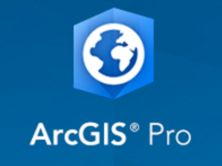Esri has released a new version of ArcGIS Pro, 2.4. This new version does contain many great enhancements and new functionality which I am very excited about. I think you will be as well. Here is a list of what I feel are some of the key improvements in this release:
- The ability to export a model from ModelBuilder to a python script has been added back. I say added back because in version 1.0 you could do this. Then in version 1.1 it was gone and has been that way until now. At 2.4 you can export models to python scripts or the python window in ArcGIS Pro. For all of us that are only novice programmers this is a big feature!
- The ability to select a series of geoprocessing tasks in the History and turn them into a new model. This is completely new functionality but makes creating new models even easier. Just figure out the manual step by step process needed to perform an analysis or workflow and after you have run through it once, you simply select the geoprocessing operations from the History tab in the Catalog pane and right click select add to model. ArcGIS Pro will add the tools and variables to the model as well as determine the connections as best it can. You can also drag and drop from the history into a model. Not perfect but certainly a good start and time saver. This function is do able because so many of the buttons found in ArcGIS Pro are now linked directly to geoprocessing functions in the Toolbox.
- The Parcel Fabric is now supported. This is slightly miss leading but still a good step forward. The ArcGIS Pro parcel fabric is not the same as the one used by ArcMap. You will need to convert your existing parcel fabric over to this new version. The new parcel fabric is not usable by ArcMap or at least that is what my testing has indicated. This new parcel fabric is supported in both single user (file Geodatabase) and multiuser (ArcGIS Enterprise) environments. This is good to hear because there were rumors floating around that it would require ArcGIS Enterprise like the new Utility Management Network extension does.
- Dynamic Feature Binning has been added. This new function aggregates point data into dynamic polygons which are then labeled with the number of point features within each polygon.
- The Explore tool, which combines the functions of pan, zoom and identify, now has the ability to be set to not identify. This means it basically just functions as a zoom and pan tool and not pop-up identify window will open when you click in the map. The informational pop-up can be annoying if you are just trying to navigate within the map while editing or just trying to set the proper location and scale to use in a layout. This new enhancement should make that a lot more enjoyable.
- Map clipping is has been added to the Map Series function (Formerly called Data Driven Pages in ArcMap). This function will clip the map frame in your layout to the extent of the index feature. Grids and Graticules will also honor this clipping.
- You can now Convert Labels to Annotation for a single layer or the entire map. This converts the text labels to geodatabase annotation. ArcGIS Pro 2.4 still does not support map annotation but that is coming in a future release.
- Improved support for Excel Spreadsheets. This includes improved capability for handling special characters and column names. You can also copy columns from excel and paste them into an editable table in ArcGIS Pro.
- Publish directly to ArcGIS Server. In past versions of ArcGIS Pro you had to have Portal installed in order to publish a service to ArcGIS Server (now part of ArcGIS Enterprise). With 2.4, Portal is not required. You can connect directly to ArcGIS Server similar to the method that has been used in ArcMap for years.
- ArcGIS Pro now uses Python 3.6.8. Not exactly sure what this means but I assume it has some improve capability.
- The Arcpy.mp module has increased access to the Esri cartography information model (CIM). This means you can use python to control and adjust even more cartography setting. This should mean you have even greater flexibility when trying to automate the publication of maps whether printed or publish as web services.
- Better rendering of TINs. Ok this might not be specific to 2.4 but I have found that since 2.3 TINs work much better in ArcGIS Pro than past releases. Older versions of Pro did not render TINs even as well as ArcScene or ArcGlobe. That has since changed with these newer versions.
So these are just a few of the new capabilities of ArcGIS Pro 2.4. For a much more detailed list go to https://pro.arcgis.com/en/pro-app/get-started/whats-new-in-arcgis-pro.htm. As with any new software version or patch, you should test it in your environment thoroughly before putting it in to your main production. I have already seen a couple of bugs reported.
I hope you find this helpful. If you have not worked with ArcGIS Pro yet or looking for a helpful resource, you might want to check out the eGIS Associates YouTube channel (https://www.youtube.com/user/eGISAssociates). We have many ArcGIS Pro videos posted including comparisons to ArcMap and several how to videos.
Upcoming ArcGIS Pro Classes
Learning ArcGIS Pro 1: Maps and Projects
Learning ArcGIS Pro 2: Editing, Analysis, and Automation
Learning ArcGIS Pro 3: Converting, Linking, and Analyzing Data
Learning ArcGIS Pro 4: Sharing Your Maps and Data

